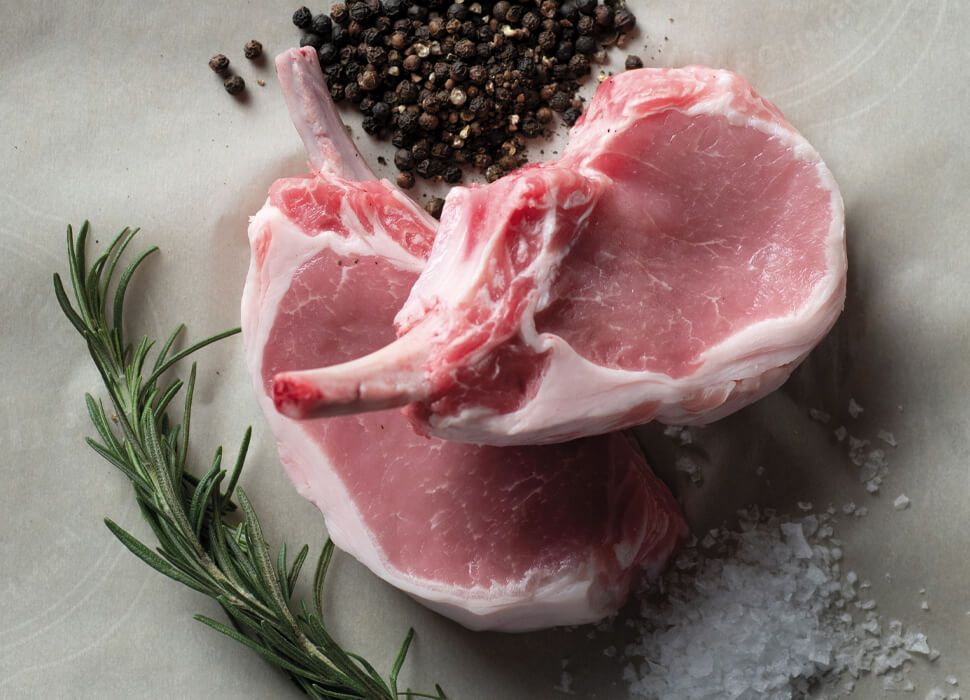Imagine sinking your teeth into a succulent slice of ham—tender, smoky, and just the right amount of saltiness that leaves you craving more. Whether it’s stealing the spotlight at a festive Thanksgiving dinner or gracing your deli sandwich, ham is one of the most versatile, easy-to-love meats out there—especially if it’s pre-cooked!
But here’s the twist: There’s a world of ham out there, with different types, cuts, and curing methods vying for your attention. Feeling slightly overwhelmed? Don’t fret. We’re here to unravel the secrets of this scrumptious meat, so you’ll always know just the right ham to choose!
What Is Ham?
Before diving into the finer details, let’s start with a little foundational education and explore what ham actually is. When we say “ham,” we’re typically talking about a specific cut of pork, and most of the time, it’s taken from the leg. However, what sets different types of ham apart is how it is made—including the smoking process, curing techniques, and distinct flavors added.
We’ll explore various types of ham shortly, but it’s worth noting that not all ham originates from the leg! For instance, deli ham might contain pork leg and other parts since it’s mechanically processed. Then there’s picnic ham, which derives from the pork shoulder and not the leg.

How Is Ham Made?
You might be wondering, what is ham made of, and how is it crafted to land on my plate? Although the process of making ham can vary depending on the type you choose, in general, most producers follow a tried and true method, which includes the following steps:
Select the Best Cut First
It may seem obvious, but the delectable taste, texture, and overall freshness of the final product always starts with choosing a high-quality pork cut first! For instance, here at Coleman Natural, we source directly from small American family farms that humanely raise their animals—with no antibiotics or added hormones. This naturally leads to better meat you can trust to serve your family.
“What we do takes a lot of…care for the animals. We keep an eye on them, we know them, and it results in happier pigs and overall better meat. It’s certainly not the easy way, but it’s important not only to my family but to today’s consumer.”
Tim Brandt, Brandt Swine Farms
Begin the Curing Process
Once the pork cut has been selected for the ham production process and any excess fat is carefully trimmed away, it’s ready for the crucial curing stage. Now, there are a few curing methods to explore.
First up, there’s the art of “dry curing.” In this technique, the pork leg is coated with salt, which draws out lingering moisture, sometimes employing nitrates to accelerate the process. Country hams–most popular in the southern U.S.–are heavily salted and dry-cured.
Then, there’s “wet curing,” known as brining. Here, the ham takes a plunge into a special liquid mixture infused with salt, sugar, and a symphony of spices. City hams, which are most commonly produced in the U.S., undergo a wet curing process.
What is fresh ham?
You may come across what’s considered “fresh ham” that’s uncooked and completely uncured—which is extremely rare to come by in most grocery stores. Some consumers prefer fresh hams to control the entire curing and cooking process, but of course, it’s more time-consuming to prepare and serve.
There’s also “uncured” ham, which undergoes a technique that doesn’t involve nitrates and nitrites. At Coleman Natural, we’ve perfected the craft of ham curing using the natural touch of sea salt and cultured celery powder, offering an irresistible flavor without artificial additives, making it a better choice for you and your family!
“Coleman hams use only natural ingredients to get the traditional cured color and flavor. Choosing an uncured ham ensures that there are no artificial curing ingredients.”
Rob McEwan, Food Technologist
Once the ham is fully cured, it may rest for weeks or months so all of the flavors marry together! And then, it’s on to another important step…
Smoke for Flavor
There’s nothing better than biting into a juicy, tender piece of ham that exudes a tantalizing smoky flavor. In most cases, after the curing and resting stages, ham is placed in a smokehouse where it slowly smokes over wood—and the type of wood chips used can certainly affect the flavor!
For example, our Uncured Ham Steak is slow-smoked over seasoned applewood, which infuses the ham with bright, fruity notes.
“Coleman Hams are smoked using all natural Applewood wood chips. The temperature of combustion of the wood chips and time in the smoke are very important to color and flavor development. We use a traditional smoking process to burn wood chips at the right temperature to smoke our hams for hours to get the best color and flavor possible.”
Rob McEwan, Food Technologist
Our Semi-Boneless Uncured Half Ham is slow-smoked over real hardwood, imparting the ham with an exceptional, full-bodied taste! After the ham is smoked, it may enter an “aging” process for an extended period of time, which also heightens the texture and flavor profile.
Different Types of Ham
So, we’ve already introduced ham as one of the most versatile proteins in the culinary world. Now, let’s delve deeper into this claim by exploring the wide array of ham varieties at your fingertips!

Ham Steaks
Cured, pre-sliced ham steaks will be your best bet if you want to fashion a finger-licking good ham sandwich or create a hearty salad topping.
Coleman Natural, fully-cooked ham steaks are packed with flavor and can be ready to eat within minutes! If you prefer the slices warmed up and crispy, we suggest heating them in the air fryer for a few minutes or placing them on a hot griddle.
Breakfast Ham
Otherwise known as ham steak, breakfast ham is essentially sliced ham, but slightly more tender—making it an exceptional addition to a breakfast or brunch spread! Many choose to enjoy it chopped up in a breakfast burrito, sauteed in an omelet, or diced up and mixed into a savory quiche.
Picnic Ham
As we mentioned, picnic ham comes from the pork shoulder rather than the traditional leg! While it may not be a classic ham cut, it undergoes a unique curing process to capture the essence of authentic ham. It’s still just as juicy and tender—perfect for a variety of dishes such as savory soups and stews.
Whole Ham

For special occasions and holidays like Christmas or Easter, opting for a whole ham can prove to be a convenient choice to satiate the appetites of hungry guests. Typically weighing in at 18-20 pounds, a whole ham can include pork butt and shank, making it an ideal choice for catering to sizable gatherings.
While whole hams are excellent for feeding large crowds, the slicing process can be a tedious task. This is where our Applewood Smoked Uncured Bone-In Spiral Ham comes in as an exceptional and effortless alternative.
Our spiral hams come pre-cut in a seamless, continuous swirl, preserving the meat’s original form on the bone. When it comes time to indulge, you can easily slice each piece, which ensures everyone gets an equal portion at the dinner table!
Ham Hock
Elevating the taste of soups, stews, and stocks is as easy as adding a ham hock, also called a “pork knuckle.” Ham hocks have a naturally rich, smoky flavor that comes alive when simmered or braised. While they’re commonly used to enhance various dishes, they’re also delicious on their own.
Boneless vs Bone-In Ham: What’s the Difference?
At the end of the day, whether you choose bone-in ham or boneless ham really comes down to personal preference. For instance, anytime the bone is left in ham, you’ll always extract more flavor, as the bone naturally “stores” this essence. Boneless ham is often much easier to prepare and slice—making it an ideal choice for quick, weeknight meals.
At Coleman, we give you plenty of boneless options such as Sliced Boneless Uncured Quarter Ham, Boneless Uncured Quarter Ham, and Boneless Uncured Half Ham—all fully cooked and ready to eat! You can also try our Semi-Boneless Uncured Half Ham, which is perfect for a small and intimate special occasion and again, ready to serve within minutes.
Must-Try Ham Recipes
Specialty Hams to Know
Ham isn’t limited to American cuisine; it’s been adapted and enjoyed in various ways worldwide!

Black Forest Ham
If you ever come across “Schwarzwälder Schinken” on a German menu, this translates to “Black Forest Ham”—originating from the Black Forest region of Germany. Unlike any other type of ham, this variation goes through a meticulous curing process.
Traditionally, it’s coated in salt and a blend of seasonings, such as juniper berries and garlic, unleashing its earthy flavors. Many people prefer to layer Black Forest Ham in sandwiches or add it to charcuterie boards.
Prosciutto
If you’ve ever ordered a charcuterie plate, chances are you’ve come across prosciutto, an Italian dry-cured ham that’s popular worldwide.
It’s aged for over a year, seasoned with salt, and air-dried, giving it a unique, slightly sweeter flavor compared to most hams. What makes it stand out is that it’s cured without nitrates. Prosciutto is incredibly versatile; you can use it to elevate classic pizza or pasta dishes, and it pairs wonderfully with juicy fruits like sweet melon.
Jamón Ibérico
Spain boasts one of the most iconic hams worldwide: Jamón Ibérico. What sets it apart is its unique nutty flavor, a result of the animals’ diet rich in acorns.
This ham undergoes a dry curing process, where it’s carefully salted and then aged for a span of 12 months to four years. When it’s finally ready to savor, it’s delicately sliced into thin, mouth-watering slices—an exceptional addition to a tapas spread or a sandwich.
Always Buy Ham That’s Delicious
In the world of ham, the choices are many, but we like to say there’s one compelling choice that stands out: all-natural ham. At Coleman Natural, we’ve been pioneers in setting high standards not just for the flavor and quality of our products, but also for the well-being of the animals and the health of your family. We believe that natural, uncured ham is not just a delicious choice but a smarter one.
Our commitment to defining and upholding the “natural” standard in the meat industry is an integral pillar of our story. We take great pride in being one of only two pork producers in the country with the American Humane Certified™ seal. Coleman Natural provides premium quality meats you can feel good about serving to your family and friends. It’s humanely raised by family farmers in the U.S. with no antibiotics ever, no added hormones, and no artificial ingredients.
So, when you choose Coleman Natural, you’re not only choosing the finest ham, but you’re also supporting a legacy of responsible farming and ethical practices. It’s a choice you can always feel good about.
Enjoyed this article about ham? Try these next!


